Fish welfare guidance
This article is aimed at anglers new to the sport and new to carp angling in particular. Hopefully, it will be read by anglers of varying levels of experience as it relevant to the welfare of any specimen fish.
Paragraphs cover
- Choice of venue
- Overfeeding
- Essential equipment
- Specimen fish handling
- YouTube clips on fish handling
- Unhooking specimen fish
- Eels and Perch
- Pike
- The best way to retain carp
- Keepnets and code
Choice of venue
The important advice for anglers new to carp fishing is not to start on a water such as Silver End Pits where there is every chance of catching a twenty to thirty pound plus carp. Novice anglers should not attempt carp fishing on these venues but gain experience on a water where the average size carp is smaller. Ideally, novice young anglers should be are accompanied by an experienced carp adult angler.
Poor handling of a carp through lack of experience or not having the right equipment could result in the death of a large carp with a significant cost to the club. A 25lb carp could be 20 years old and cost £900 to replace. Large common carp are difficult to find to buy.
It is important to remember that when the carp or any specimen fish is on the bank, its welfare is completely in our hands. It is up to us to preserve our carp stocks in the best condition possible, by looking after each and every fish to the best of our ability.
Naturally, a good number of anglers who read this will understand exactly how to best look after their catch when it is on the bank, nevertheless to an inexperienced angler or someone new who is coming into the sport, it may be less obvious. It is not uncommon to find a novice angler who is able to tie a decent PVA presentation, but completely unable to look after the carp that they catch with it.
Overfeeding
Overfeeding the water is a problem that has been experienced by many clubs this year mainly due to the additional angling pressure caused by the number of anglers fishing popular night fishing venues. This is, however, a problem that occurs most years.
In August 2020 the Environment Agency reported a number of fish deaths in Essex and issued a warning to clubs concerning the excessive amounts of bait being put into waters. During hot spells, there is a danger of uneaten bait leading to algae blooms that can deplete the dissolved oxygen to fatal levels. In the summer of 2018 we had to introduce a ban on the feeding of particles and a limit on boilies on the Silver End Pits following a prolonged orange algae bloom on the Front Pit.
Periods of increased angling pressure can easily result in excessive baiting as each angler piles in the bait with no regard to previous anglers’ baiting.
This is an appeal for all KDAA anglers to be careful how much bait they put into the water. Too often we have seen an angler spodding in a large amount of bait, catch nothing and then follow up with another barrage. Having departed the swim he is then followed by another angler who repeats the overfeeding sometimes into the same target area. Since the lockdown ended for anglers, our fish have seen more bait than ever before. No wonder some fish must be “stuffed to the gills” and not inclined to feed.
Please keep your baiting to no more than 1 kilo boilies and 1 kilo particle/groundbait per 24 hours. Preferably less!
Many anglers have been using small seed-based particles. These, whilst have the attraction of being relatively cheap, do little for the wellbeing or maintaining the weight of the carp or any other fish. In 2021 the KDAA has introduced a new rule banning the use of particle feed containg microseed.
Fish Welfare Rule 9 ‘Particle bait that contains micro seed including items such as Partiblend, Pigeon conditioner, Multiseed or other similar products that contain small seed or bird seed is banned. Prepared maize, sweetcorn, hemp and tares are allowed including pellet.’
Essential Equipment
Carry and use appropriate equipment for the size and species you are targeting or are likely to catch.
We have a number of rules in the KDAA Handbook on fish welfare some on the minimum specification of equipment probably require updating. However, at the present time we would ask members and guests to ensure that they carry and use on our night fishing venues a large landing net, a large unhooking mat with sides preferably a cradle and a large weigh sling with supporting rods. We have banned the use of carp sacks and the self hooking device The Magic Twig. Bailiffs have been asked to check tackle and encourage best practice when patrolling our waters.
A knotless landing net, big enough for the intended species. e.g. carp a 42” plus net.
Generalist anglers obviously may not wish to use a large carp landing net when float or pole fishing for silvers, tench, bream and not targeting carp, but we would expect them to use an adequately sized landing net when fishing our night venues to ensure the larger carp are landed safely. These are not expensive at around £19-£23.
Dual mesh nets also help. The top wide mesh reduces water drag when the net is raised, and the close mesh or sacking base enfolds the fish while ensuring no damage is done to the fins or the scales.
For pike a special net with rubberised mesh to reduce chances of hooks catching in the mesh.
In addition to a adequate sized landing net any angler catching a large carp please only attempt to weigh it if you have the proper equipment. Bailiffs have seen anglers trying to weigh a twenty pound plus fish in a weigh net bag with the result that the carp has fallen out of the bag and rolled down the bank. There is also a danger of fins and tails splitting with a weigh net bag.
Please use a weigh sling with rigid poles along the top. These come in two types – weigh slings and retention slings, the descriptions of which are sometimes used interchangeably, but they’re not quite the same thing.
A weigh sling is equipment used to safely carry the carp while you weigh it. A retention sling does exactly that, but with an added buoyancy element. Essentially, retention slings allow an angler to temporarily retain the carp in the water before and after weighing it. Doing so, enables the fish to recover. These are particularly useful if the water is sufficiently deep in the margin but tend to be more bulky to carry.
Best Carp Weigh Sling – Top 7 Carp Slings of 2022 (carphideout.co.uk)
If you do not have a rigid pole sling to weigh a large carp return the fish to the water immediately without attempting to weigh it.
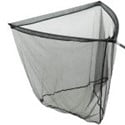
Carp landing net
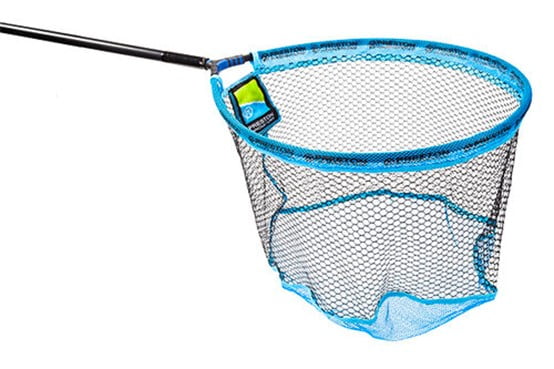
Match landing net
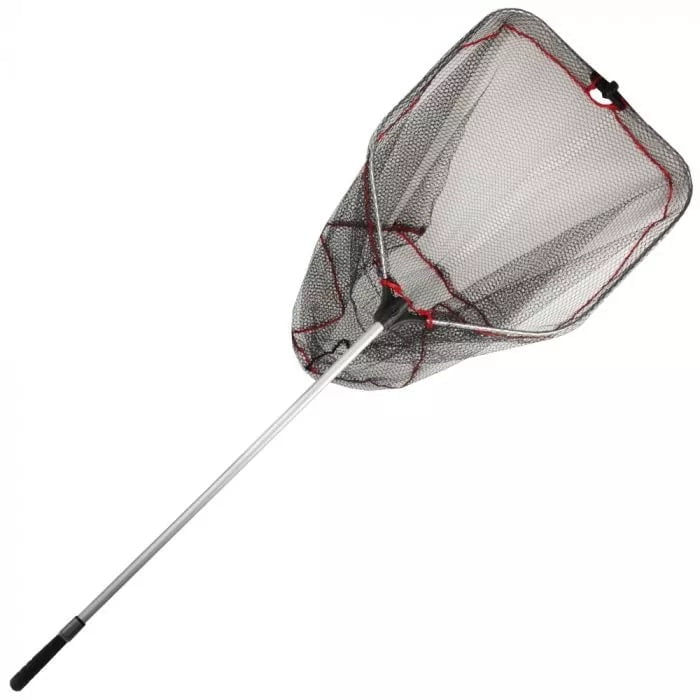
Pike net
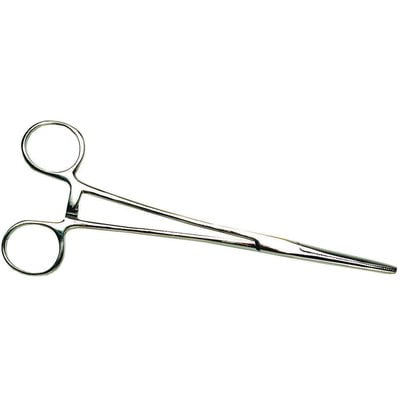
Forceps
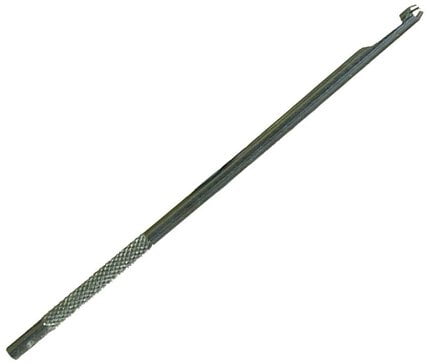
Disgorger

Long nose pliers
for pike fishing
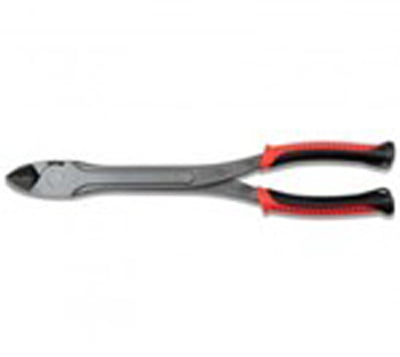
Hook cutter
for pike fishing

Unhooking mat
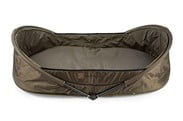
Unhooking mat with sides

Unhooking cradle
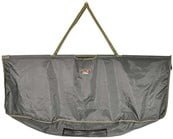
Weigh sling
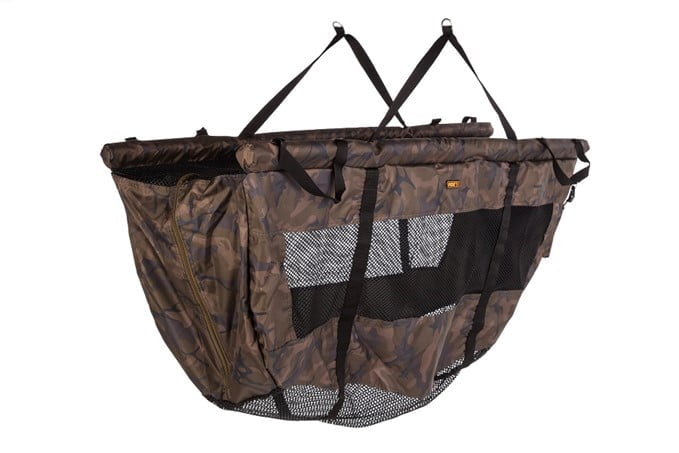
Floatation weigh sling
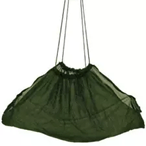
Weigh net
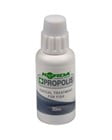
Propolis carp treatment
There is wide range of carp treatment products available
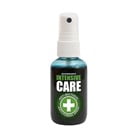
Intensive care liquid
Specimen fish handling
- Ensure your nets, weigh sling and unhooking mats are all fully dried in the sun between sessions, this will eliminate the risk of passing on a disease or infections from one venue to another. It will also prevent your net from growing mould and become generally unpleasant.
- Keep the fish in the landing net, in the water until you are ready to unhook on a mat or cradle, weigh and take any photographs.
- Wet the unhooking mat, weigh sling and your hands as this will prevent the removal of the fish’s protective slime. Wetting the unhooking mat on a hot day is more vital as it will be hot to touch and can harm the fish.
- Have the weigh sling ready and opened flat on top of the unhooking mat.
- Ensure the camera and weighing equipment is ready, and the scales are set to zero with the wet sling.
- Always use an unhooking mat spread on a soft flat surface, rather than on uneven or hard bankside. Never use a unhooking mat on a sloping bank.
- Be aware that watch straps can catch and damage a fish.
- When transferring a larger fish to the unhooking mat, remove the net handle and/or break the net down if possible and roll the sides of the net down to just above the fish.
- Ensure all fins are folded back against the fish otherwise you could cause permanent damage.
- Transfer the fish to the unhooking mat/ weigh sling ensuring you have a bucket/bottle of lake water close by. It is important to keep the fish wet throughout the weighing and photographic session. It will also help to ensure the fish looks its best for your photos.
- Do not wrap a towel round fish as it damages their mucus layer. Wet hands only.
- Minimise the time the fish is out of water and handle it as little as possible. Covering the head of the fish with a wet cloth will help keep it calm and stop it flapping.
- When posing with your capture, do NOT stand or lift the fish any higher than necessary (knee height). The lower the better and ALWAYS above an unhooking mat or cradle. This will reduce the chance of your fish being damaged, especially should it start to flip. If this should happen, curl the fish into your chest and lower to the mat. Wet the fish again and repeat the process. The further you hold the fish away from your body, the harder it will be to safety control if it starts to thrash around, just keep your upper arms parallel to your body with your elbows tucked and your forearms at a right angle.
- It’s important to look after the carp’s fins when you’re posing with it. To best support and control the fish place one of your hands with the pectoral fin secured between your fingers, do the same with your other hand for the anal fin.
- Before returning the fish, give it a quick check over and treat any hook damage or scales, which have been lifted during the fight. There are many products available for this purpose and a small amount on the damaged area will speed the healing process.
- When returning the fish, it is vital to keep the fish low to the ground, and in the landing net or weigh sling. This is a time when many fish get damaged, please do not be tempted to return the fish quickly by taking a chance and carrying it in your hands. It is bound to flip and hit the ground causing scale damage or even worse, death. It would be sad to see your previous good work worth nothing when watching the fish struggling to swim off.
- If you have caught a larger fish and had a hard fight to land the fish, allow time for the fish to recover when releasing. Hold the fish upright in the weigh sling/landing net or by hand until you feel the fish kick.
Article on fish handling by Blaine Mitchel (badangling.com) click here
YouTube clips
There are many clips on YouTube offering advice on Carp care.
https://www.youtube.com/results?search_query=carp+care
https://www.youtube.com/results?search_query=handling+carp
A good one to view first is Fish care with Danny Fairbrass
https://www.youtube.com/watch?v=BEYoNctNjYg&t=494s
Unhooking specimen fish
It is important to grip the hook correctly when removing it from a fish’s mouth. For large fish, you need to hold the hook at two points, apply steady thumb pressure against the eye of the hook and use your index finger to prevent the hook from moving around. Once you’ve got to grips with the hook, apply the thumb pressure to the eye of the hook whilst pushing down the shank in the opposite direction to the point of penetration.
Some hook holds are easier to remove than others. If you’re really struggling to unhook the fish, then use a pair of forceps by clamping down on the shank applying steady downward pressure.
If you find yourself in the unfortunate position where the hook point has gone in and come back out of the flesh, instead of passing it back through, which could cause significant damage to the fish’s mouth, simply snip the point and barb off the hook and pass it back through.
Note that deep-hooked fish should survive if the hook cannot be removed. Cut the line as far into the mouth as possible. Do not pull hard on the line and always release the fish immediately. Cutting the line is particularly important with deep hooked perch and eels.
Eels and perch
All eels should be returned alive, as it takes a long time for them to reach specimen size. Eels may become land-locked, in which case they will grow to specimen proportions and provide anglers with an interesting target. Once on the bank all eels should be handled with care. It is particularly important that the protective mucus is not removed in handling; never use newspaper to hold them but lay them on their backs and gently hold in this position for a few moments. The eel will calm down and is unlikely to move from this position. Unhook with forceps if the eel is hooked in the lips or scissors. If the eel is deep hooked cut the line or trace as close to the eel’s lips as possible and release immediately. The eel, under these circumstances, will lose the hook very quickly. Do not attempt to remove deep hooks from eels. The heart and other vital organs are very close to the back of the throat and you may cause fatal injuries if you damage them.
Deep hooked perch should be treated with the same care as you would with eels. Hook lengths or traces should be cut as low down as possible and under no circumstances try to use a deep disgorger to remove deep hooks. In perch, the heart is very close to the back of the throat and it has been shown that fish are much more likely to survive if left to shed the hook naturally.
Pike
Pike look a very ferocious fish but if you know how, they are very easy to handle, but in all honesty are a very fragile predator, and if mistreated will soon die. You will need additional equipment such as long nose forceps or preferably long pliers for unhooking and wire/hook cutters pliers. There are many useful articles on the web about handling and unhooking pike. The line breaking strain used for pike should be suitable for the rods used to cast dead-baits or heavy lures, a minimum of 15lbs is recommended. Wire traces should be at least 18 inches long and 28lbs breaking strain. View the Pike Angling Club’s article on ‘Fishing for Pike – Handling Pike’ at https://pacgb.com/fishing-for-pike/
There are also YouTube clips on pike fishing and unhooking pike. https://www.youtube.com/watch?v=sS7XBbF4Cf8
What’s the best way to retain a carp?
A landing net? A retaining sling? Or a sack? Here’s fish scientist, James Anderson with the answers. www.carpology.net/
1 Landing net
In what situation is it suitable to just retain the fish in the landing net?
In some cases the most stress-free way of retaining a carp for a short period of time is to leave it in the landing net. This is fine for up to 15 minutes and means you are not transferring fish into slings and sacks. This is done while getting camera equipment, scales and unhooking mats prepared and ready. The preparation of this equipment should always be done while the fish is in the water to ensure it is out of the water for the minimum time possible.
If retaining carp in a landing net it is important the net is deep enough for the fish to sit upright and that the water in front of the swim is at least 2-3ft deep. To retain the fish, hang the net over the front of the swim so that the spreader block is sat just back from the edge. To prevent the fish from escaping and pulling the net in, you can either push a peg or bankstick through the spreader block or sit a heavy-weight such as a bait bucket or rock on the handle of the net. If the carp is looking like it may jump out of the net then I sometimes lay a sling or mat over the top to keep it calm and prevent any acrobatics. This method is not suitable for retaining fish for any length of time but is mainly a method to prevent leaving the fish laying on the unhooking mat while you are in the bivvy searching for your camera. It is also a good opportunity to allow the carp to recover from the fight before weighing and taking pictures.
Best for… Retaining a carp for a short period of time whilst you get the mat, camera and weighing equipment organised.
Max time limit… 15 minutes
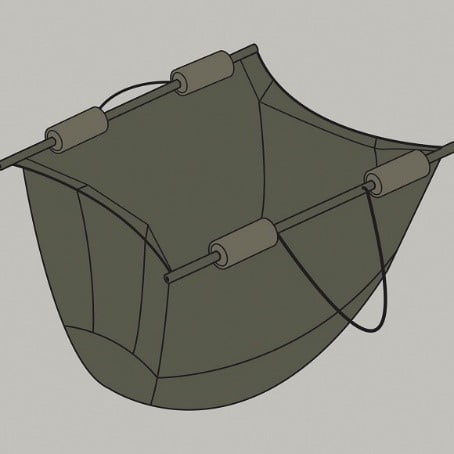
2 Retainer Sling
How long can I keep a carp in a retaining sling?
When retainer slings were first brought onto the market a few years back they struck me as being a brilliant idea and after using one for a couple of seasons now I don’t know how I ever managed without one! Retainers are ideal for keeping fish in for up to about 45 minutes if you need to wait for someone to come and take a photo of a big fish or for the light to improve slightly at dawn. They don’t have a lot of the risks associated with sacking fish due to their buoyant nature. If the retainer is not tied to the bank properly and breaks free the worst case scenario is that it will float away but will always be visible making rescuing the fish with a boat relatively straight forward.
Because of this buoyancy however, the fish is always kept in the upper layers of water which tend to be warmer, especially in the summer months when the sun is beaming down onto the retainer. This exposure to temperature change is why retainers are not suitable for keeping fish in for as long as a sack. If possible, position the retainer in a shaded area to reduce stress from direct sunlight.
Another key point to consider when using a retainer sling is the wind strength and direction, this is also very important when keeping fish in a net or sack. If there is a strong headwind blowing into your bank it is not always possible to retain fish as you risk the fish getting knocked about in the waves and being blown into very shallow water. In this situation try to find a sheltered area or alternatively a sack with a long cord will enable the carp to sink into deeper, calmer water. Whatever the situation, check any retained fish regularly to ensure they are not in distress.
Best for… When you’re waiting for someone to come and take the pictures or you’re waiting for the light levels to improve.
Max time limit… 45 minutes
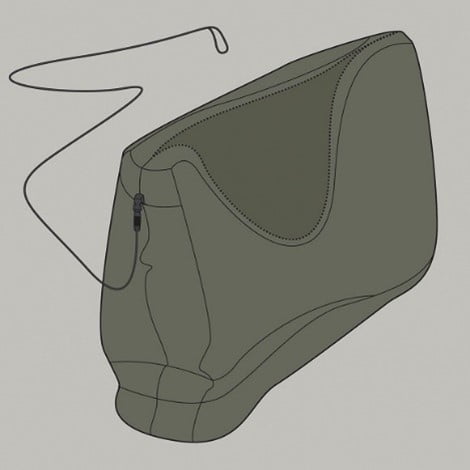
3 Sacks
When would I use a carp sack?
If used incorrectly, sacks can be very dangerous and subsequently have been banned at many fisheries. Fish can be retained in sacks for up to four or five hours safely without causing undue stress. I have seen carp retained for much longer but this is something I would advise strongly against.
In the past, sacks have been generally used when fish are captured at night and the light isn’t good enough to get a decent photo. What I would say is with the improvement of cameras there is very little need to sack fish for anything more than 45 minute and in this situation the retainer sling is more appropriate anyway. It is much more important to make sure you have a good quality camera with a remote or timer combined with a tripod to hold it steady. With this set-up and a bit of practise you are equipped to take a good shot of that special carp day or night without having to retain it for any length of time.
If for whatever reason you may need to retain a carp in a sack it is important to ensure that the margins in front of the swim have a good depth of water. Ideally over 5ft so that the fish isn’t subject to rapid temperature changes that occur in shallow water. You must also ensure the sack is big enough for the fish you are sacking with plenty of space. Any sack should have a 12ft long nylon cord attached so the fish can access the deeper water in front of the swim. Once the fish has been placed into the sack it is important to check it regularly to ensure it is sitting upright and is not in any kind of distress.
It is vitally important to ensure any sack or retainer is secured to the bank properly to prevent the fish escaping whilst trapped inside. If a fish does escape while in a sack its chances of survival are low and it will face a slow death unless it is found and released.
Best for… When a retaining sling isn’t an option and you require photos but don’t have the necessary equipment to do them on a self-timer.
Max time limit… Up to five hours.
Conclusion
In summary, if you need to retain a carp, do it for the shortest time possible. The more you can reduce this period and keep handling to a minimum, the more you will reduce the stress the fish is subject to. Always check the carp regularly and if the fish shows any signs of distress such as loss of balance or laying on the surface return it immediately, a good photo is not worth the life of a fish.
Please note that KDAA Fish Welfare Rule 5 states that ‘Carp sacks are banned’.
Bear in mind that many KDAA waters do not have sufficient depth of water in the margins to be able to use a floatation retainer sling safely.
Keepnets
Keepnets are only suitable for small shoal fish. Never use for large carp, pike, zander, tench, perch, barbel, catfish or grayling. Large fish are not suited to keepnets because of their size, and others, regardless of size, such as carp and barbel, are unsuited because the serrated front rays of their dorsal fins can be caught and damaged by netting.
Use only when necessary and retain fish for the shortest time possible.
Do not use if the water level is too shallow in the margin.
A “stake out bar” to prevent the net from collapsing, or a weight on the end of the net is helpful, when wind or current could move it to the detriment of the fish. In moving water, a rectangular section net helps avoid rolling.
Keepnets must comply with Agency byelaws. Those with a drawstring or zip bottom release are best.
The use of keepnets incorporating ‘carp sacking’ at the bottom to provide a dark, safe area, is to be encouraged. These are often referred to as ‘conservation mesh’
KDAA Fish Welfare Rule 6 – No carp longer than 30 cm (12 inches) may be held in a keepnet except in authorised matches
Angling Trust Keepnet code:
Wet hands before holding fish.
Once positioned, avoid all unnecessary disturbance.
Always use the largest keepnet possible.
When safe to do so, on still or shallow waters always peg out the keepnet to prevent collapse.
Always place the keepnet as near to fishing position as possible – preferably immediately in front, so fish can be placed quickly.
Place the fish in the keepnet and as quickly as possible.
Retain fish in keepnet for minimum period of time.
Do not overcrowd keepnet – when big catches are expected, take two nets.
When returning fish to the water or weighing:
Collapse the keepnet and place the fish gently in the weighing bag or back into the water.
Do not slide or tumble fish down the keepnet.
Environment Agency Fisheries Byelaws on keepnets, keepsacks and landing nets
(1) Any person shall be guilty of an offence if he uses:-
(a) a landing net with any knotted meshes or meshes of metallic material.
(b) a keepnet with any knotted meshes or meshes of metallic material, or having any holes in the mesh larger than 25mm internal circumference, or of less than 2.0 metres in length, or with supporting rings or frames greater than 40cm apart (excluding the distance from the top frame to the first supporting ring or frame) or less than 120cm in circumference.
(c) a keepsack not constructed of a soft, dark coloured, non-abrasive, water permeable fabric, or having dimensions of less than 120cm by 90cm if rectangular, or 150cm by 30cm by 40cm if used with a frame or designed with the intention that a frame be used.
(2) Any person shall be guilty of an offence if he retains more than one fish in a single keepsack at any time.
(3) This Byelaw shall not apply to any keepnet or keepsack used for retaining eels which have been legally taken by instruments other than rod and line.
(4) This byelaw was made taking account of the requirement for notification to the European
Commission under Council Directive 83/189/EEC.
Article acknowledgements:
Angling Coaching Initiative – Students Handbook – www.anglingcoachinginitiative.co.uk/
Angling Trust Code of Conduct – www.anglingtrust.net/
James Anderson – www.carpology.net/
Blaine Mitchel – www.badangling.com/
Pike Anglers Club- www pacgb.com
